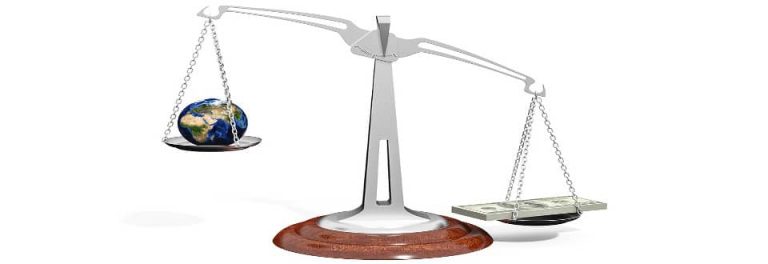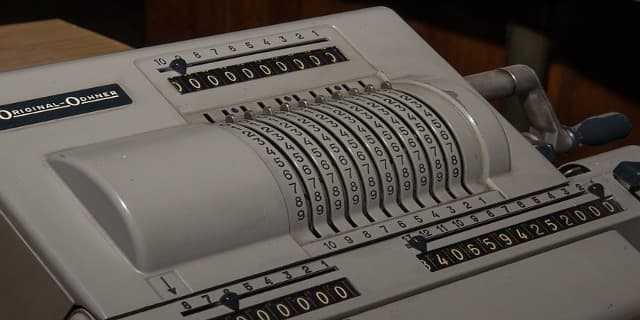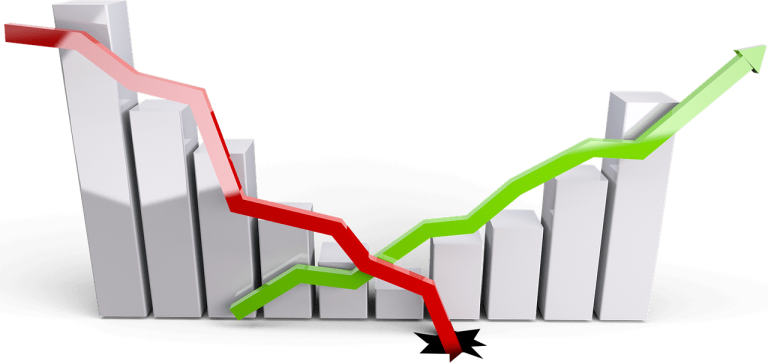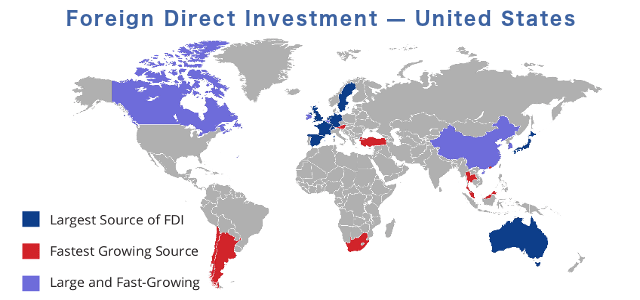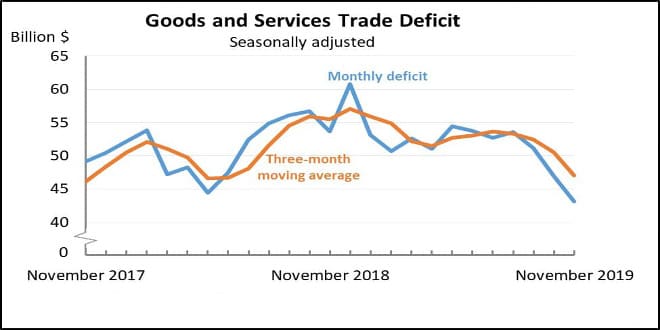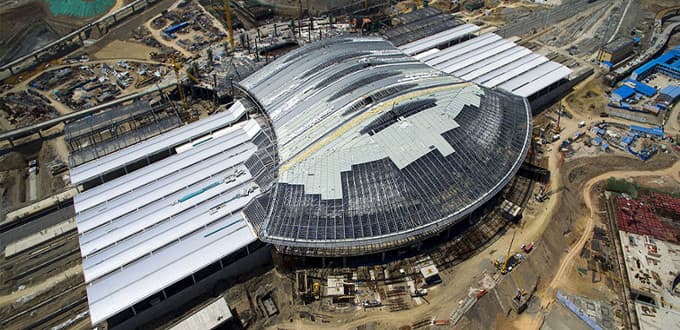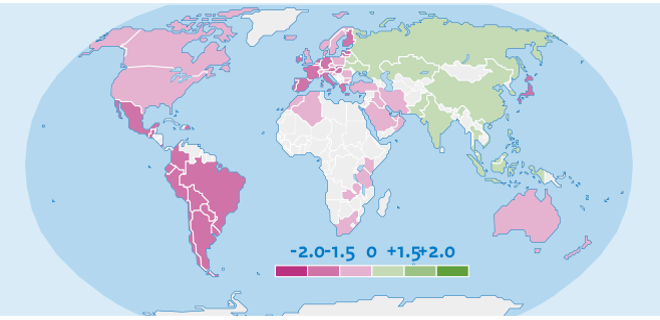An Interconnected & Interlinked World
of Business, Trade, and Commerce.
of Business, Trade, and Commerce.
US Gross Domestic Product —2019-By Quarters
Quarterly Comparison of Economy
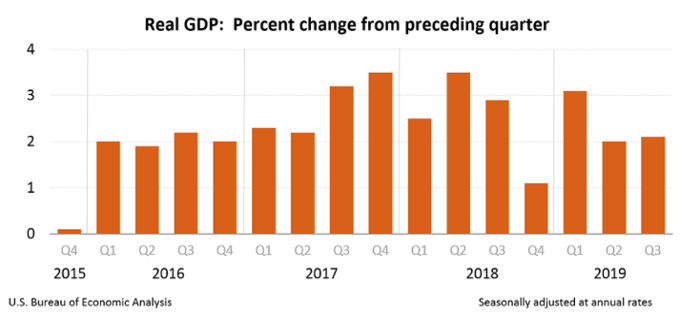
Real US Gross Domestic Product (GDP) increased at an annualized rate of 2.1 percent in the third quarter of 2019—that was up from the second quarter that was 2.0 percent. In comparison, it was down from 3.2 percent in the first quarter of 2019 as per the Bureau of Economic Analysis. release.
The accelaration in the Real GDP growth in the first quarter was reflecting an upturn in state and local government spending, accelerations in private inventory investment and in exports, and a smaller decrease in residential investment.
These movements were partly offset by decelerations in personal consumption expenditures (PCE) and non-residential fixed investment, and a downturn in federal government spending. Imports—which are a subtraction in the calculation of GDP, were turned lower.
The slow down of the economy in the Second Quarter was attributed to lower state and local government spending, exports, private inventory investment, and residential investment. While the factors that gave the upward push to the economy in the second quarter were the personal consumption expenditures.
The following is the comparative review of the Third and the previous quarters of 2019:
Third Quarter GDP Components and Factors:
The increase in real GDP in the third quarter reflected positive contributions from PCE, federal government spending, residential investment, exports, and state and local government spending that were partly offset by negative contributions from nonresidential fixed investment and private inventory investment. Imports, which are a subtraction in the calculation of GDP, increased.
The acceleration in real GDP in the third quarter reflected a smaller decrease in private inventory investment and upturns in exports and residential fixed investment that were partly offset by decelerations in PCE, federal government spending, and state and local government spending, and a larger decrease in nonresidential fixed investment.
Real gross domestic income (GDI) increased 2.1 percent in the third quarter, compared with an increase of 0.9 percent in the second quarter. The average of real GDP and real GDI, a supplemental measure of U.S. economic activity that equally weights GDP and GDI, increased 2.1 percent in the third quarter, compared with an increase of 1.4 percent in the second quarter.
Current‑dollar GDP increased 3.8 percent, or $202.3 billion, in the third quarter to a level of $21.54 trillion. In the second quarter, GDP increased 4.7 percent, or $241.4 billion.
The price index for gross domestic purchases increased 1.4 percent in the third quarter, compared with an increase of 2.2 percent in the second quarter (table 4). The PCE price index increased 1.5 percent, compared with an increase of 2.4 percent. Excluding food and energy prices, the PCE price index increased 2.1 percent, compared with an increase of 1.9 percent.
Third Quarter in Comparison to Previous Quarters
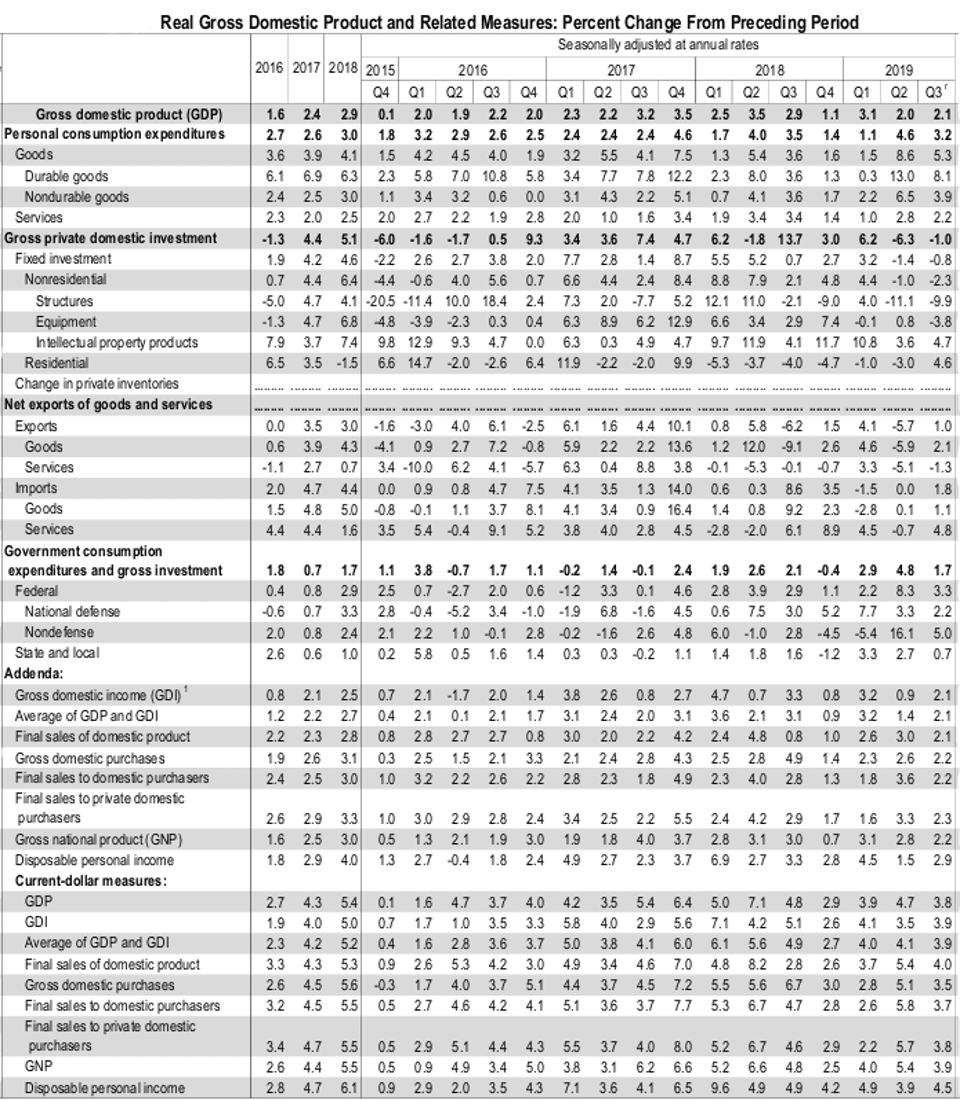
In the first quarter of 2019 Current-dollar GDP was increased 3.8 percent, or $197.6 billion, to a level of $21.06 trillion. In the fourth quarter of 2018, current-dollar GDP was increased 4.1 percent, or $206.9 billion.
The price index for gross domestic purchases increased 0.8 percent in the first quarter, compared with an increase of 1.7 percent in the fourth quarter. The PCE price index increased 0.6 percent, compared with an increase of 1.5 percent. Excluding food and energy prices, the PCE price index increased 1.3 percent, compared with an increase of 1.8 percent.
Personal Income:
Current-dollar personal income increased $147.2 billion in the first quarter, compared with an increase of $229.0 billion in the fourth quarter. The deceleration reflected downturns in personal interest income, personal dividend income, and proprietors’ income that were partly offset by an acceleration in personal current transfer receipts.
Personal Consumption Expenditures (PCE):
Personal consumption was up 1.2 percent in the first quarter, down from 2.5 percent in the 4th quarter of 2018. The decline was due to a fall in consumption of goods (-0.7 percent vs 2.6 percent in Q4, 2018). Durable goods were declined most (-5.3 percent vs 3.6 percent). Services consumption growth remained strong (2 percent vs 2.4 percent), though.
Disposable Personal Income:
Was up $116.0 billion, or 3.0 percent, in the first quarter, compared with an increase of $222.9 billion, or 5.8 percent, in the fourth quarter of 2018. Real disposable personal income was increased 2.4 percent, compared with an increase of 4.3 percent in the previous quarter.
Personal Savings:
Was $1.11 trillion in the first quarter, compared with $1.07 trillion in the fourth quarter of 2018. The personal saving rate — personal saving as a percentage of disposable personal income — was 7.0 percent in the first quarter, compared with 6.8 percent in the fourth quarter of 2018.
Exports:
Exports were 3.7 percent in the second quarter, while imports were down 3.7 percent—it was the largest drop since the Q4 of 2012.
Second Quarter GDP Components and Factors
The Increase in Real GDP:
It reflected positive contributions from personal consumption expenditures, federal government spending, and state and local government spending that were partly offset by negative contributions from private inventory investment, exports, residential fixed investment, and nonresidential fixed investment. Imports increased.
The Deceleration in Real GDP:
Primarily reflected downturns in inventory investment, exports, and nonresidential fixed investment. These downturns were partly offset by accelerations in PCE and federal government spending.
Real gross domestic Income:
(GDI) was up 2.1 percent in the second quarter, compared with an increase of 3.2 percent in the first quarter. The average of real GDP and real GDI, a supplemental measure of U.S. economic activity that equally weights GDP and GDI, was increased 2.1 percent in the second quarter, compared with an increase of 3.2 percent in the first quarter
Current dollar GDP:
Increased 4.6 percent, or $240.3 billion, in the second quarter to a level of $21.34 trillion. In the first quarter, current-dollar GDP was up 3.9 percent, or $201.0 billion.
The Price Index for GDP:
Showed an increase of 2.2 percent in the second quarter, compared with an increase of 0.8 percent in the first quarter. The PCE price index was up 2.3 percent, compared with an increase of 0.4 percent. Excluding food and energy prices, the PCE price index increased 1.7 percent, compared with an increase of 1.1 percent in the first quarter.
Source: { Bureau of Economic Analysis—National Economic Accounts }
元 $ € ¥ ₿
Information
Reports & Analysis
To Help Evaluate
The Potentials For
Business
&
Investment
In an Interconnected
World
-
The Belt and Road Initiative & Made in China 2025
Riding high on the fast tracks of the Belt and Road Initiative, Made in China 2025 is rapidly making inroads into the countries... Fierce competition from Chinese companies...
-
MIC 2025 || The Changing Landscape of Chinese Economy
It was in 2015 that China unveiled its Made in China 2025 (MIC 2015) project. Since then, Chinese economy is metamorphosing and changing at a breakneck pace...
-
Top Freight Forwarders by Country
Large scale ‘local area’ Freight Forwarders listed here, through their contacts and arrangements, also provide services on a global scale. Their main strength though lies in...
-
Most of the Top Global Freight Forwarders listed here serve all the major ports across the Globe, and, through relationships with their business partners, also provide a full suite of...
-
Glossary: Shipping, Freight, & Supply Chain Logistics
Like any other professional field, the shipping/freight industry has its own unique set of terminology—A rather extensive and complex one. Here we have compiled the Glossary of the most useful...
-
Global Foreign Direct Investment—Inward Flow
A comprehensive and historical Global FDI Inward-Flow Data spanning the period of 2000—2018. The data is compiled by grouping and associating a variety of economies together; by the state of...
-
The new phase of economy in China is an opportunity for the businesses. The emphasis is now on raising the living standards of masses, implementing supply-side reforms, and opening up...
-
Top 50 Container Ports in The World
Large Capacity & Super Busy Container Ports in a country are the pointers of country’s economic potentials...Bulk of the world trade in goods—more than 90% of it...
-
Supply Chain | Definition and Objectives
Supply Chain can be viewed as a network connecting a business to its suppliers and distributers to facilitate the production, processing, and distribution of its products to the consumers. It incorporates...
-
Global Business | Supply Chain & Logistics
With the technology—and global eCommerce platforms like Ali Baba, JD.com, Tancent, Kaola, Lazada, WooCommerce, VTEX, and Shopify etc, it is easier to sell products and services Globally.
-
Shipping Logistics | The Role of Service Providers
The logistics of getting the goods delivered to faraway destinations—especially to foreign markets, is a complex business. It requires the services of outside entities to...
-
Freight Forwarders | Role in Global Commerce
Freight Forwarders specialize in taking care of the entire process for their shippers | from warehousing to the shipping of their merchandise. They act as an agent and intermediary...
-
Real GDP | Nominal GDP vs GDP PPP
In evaluating and analyzing global investment opportunities and, also in the business decision making process, we need to know the actual comparative state of the economies of various countries and...
-
With the perspective of charting course for the expansion of business or investment, an analytical review of the ‘real value’ of a nation’s/region’s GDP is essential. To this end, an understanding of the methodologies used in...
-
New Global Business Order—The Global Information Stage
Whatever the business be, it has to be ready to play on the Global Stage. It is the global arena. The Supply-and-Demand chain is global. ..There is no business that can be considered as purely a...
-
Global Real GDP Growth Rate—And Forecast
Real GDP provides an inflation-adjusted measure that reflects the true value of all goods and services produced by an economy in term of real value of...
-
Foreign Direct Investment Inward Flow in The US—A Global Perspective
The Inflow of FDI in the U.S. was up by US $50 Billion in the 3rd quarter of 2019. FDI plays an essential role in the economic growth, creating jobs, and driving exports...The tables present...
-
US Gross Domestic Product: 2019—By Quarters
Real US GDP increased at an annualized rate of 2.1 percent in the 3rd quarter of 2019—that was up from the second quarter. Real gross domestic income (GDI)...
-
Foreign Direct Investment—Impact and Analysis
Foreign Direct Investment (FDI) plays an important role in the development and growth of any country’s economy - especially the developing countries. But, in actual practice...
-
Foreign Direct Investment and Business in China
China is establishing itself as the Model Destination for FDI inflow and a hub for corporate relocation and R&D...
-
US Global Trade & Top Trading Partners | Year-to-Date
Since hitting the peak in November 2018, U.S. global trade deficit in goods and services has been on the decline. But, the declining trends in both Imports and exports...
-
The Growth of Mobile Payments and Virtual Banking—A Global Perspective
Mobile Payments, Virtual Banking, and other modes of mobile transactions - both at consumer and commercial level, are growing globally at an ultra fast pace — more so in China and Asia Pacific and...
-
Belt and Road Initiative—Objectives & Achievements
As of the end 2019, the BRI — a project to interlink the global economies with China, includes 140 countries—encompasing more than 2/3 of the world’s population. The trade on BRI is...
-
In 2019 US imports from China dropped more than 12.5 percent to US$456 billion (Source: United States’ Census Bureau ) while China’s imports from the US dropped to US$122.7 billion...
-
Humans by nature - or by need, are traders. We trade our work, services, produce, or products for money. Then, we exchange that money for the goods and services that we need. Any excess/leftover money is either directly invested or deposited in the banks—thus, making the money to recirculate in the economy again.
Information, Data, and Reports organized alphabetically By Topic:
Global Business
Investment
Trade & Commerce
Always The Key to
to Wealth & Prosperity
Since before the days of
Camel Caravans & Sailboats














